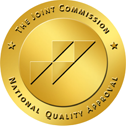Updated on 2/6/2023
March 1 represents Self-Injury Awareness Day (SIAD), an international awareness day that is dedicated to learning about behaviors like “cutting” and other intentional methods of self-injury. “Cutting” and other self-injury behaviors, also known as self-harm, include deliberately causing physical damage to oneself. Typically a sign of intense emotional distress, self-injury behaviors include skin carving, self-medicating, extreme scratching, burning oneself, punching or hitting walls to induce pain.
The Connection Between Substance Use Disorder (SUD) and Self-Injury
Studies show that self-harm and substance use were strongly correlated in the adolescent years. Causes of self-injury vary and frequently, they are due to underlying traumatic experiences. Trauma-informed care can help treat the underlying issue at hand. When someone engages in self-harm or abuses substances, treatment programs that treat co-occurring disorders can be of help.
How to Treat Self-Harm and Addiction
If self-harm and substance use are both present, an effective combination of treatment modalities includes:
- Detox that ends the physiological addiction and prepares the mind for treatment
- Psychotherapy that focuses on underlying mental health conditions such as depression, anxiety or trauma
- Cognitive behavioral therapy (CBT) which assists with dysfunctional thinking, feeling and acting out
- Dialectical behavior therapy (DBT) that encourages you to learn how to control emotions in stressful situations that you can’t change
- Family counseling, which opens avenues of communication to get your loved ones to understand the struggles
- Group therapy, which encourages you to work with peers who’re also in recovery, receiving feedback and encouragement
If you began using substances alongside harming yourself as a result of a traumatic experience, you’re probably dealing with intrusive thoughts and feelings. Working with the help of a therapist can bring about healing. It can show you healthy ways of coping with traumatic memories. Because one size doesn’t fit all, your approach to treating self-harm and SUD might differ from someone else’s. Your treatment team will help develop a plan that works best for you, and that is tailored to your needs.
What Is Trauma?
A person who has endured trauma experienced something that was physically and/or psychologically harmful to their well-being. Trauma can have long-lasting impacts on physical and mental health, particularly when the brain is still developing in childhood. The three forms of trauma are:
- Acute trauma: the result of a single incident like witnessing a violent event or the impacts of a natural disaster.
- Chronic trauma: the result of a series of events like domestic abuse or bullying.
- Complex trauma: the result of exposure to a combination of circumstances like prolonged neglect and mental illness within the family.
Children are particularly vulnerable to the negative impacts of repeated trauma. Chronic and complex trauma can cause the brain to remain in a heightened state of stress. This can alter a child’s long-term behavioral, emotional and cognitive functioning to maintain and promote survival. Some adult victims of childhood abuse, for instance, feel like they are in a constant state of fight-or-flight, even when the situation does not call for it. This can lead to substance abuse and self-injury.
Seeking Treatment for Self-Harm and SUD
Oftentimes, many engaging in self-injury are worried about seeking treatment out of fear that people won’t understand them, or will judge them. If you’re engaging in self-injury, don’t wait to get treatment. Don’t wait until the next Self-Injury Awareness Day to ask for help. The caring staff at Casa Palmera understands your needs and wants to help you. Contact us today to take the first step towards healing.




